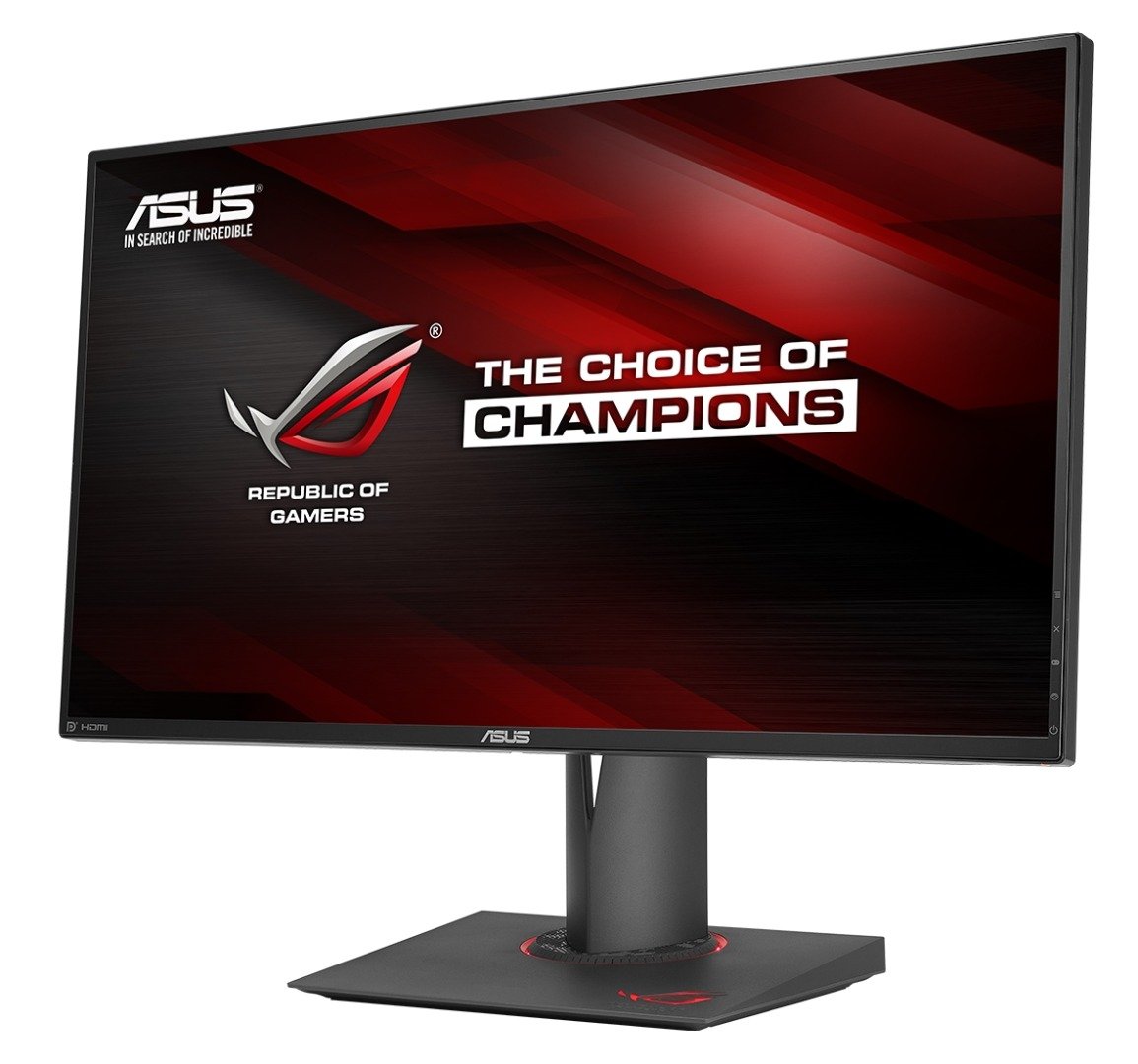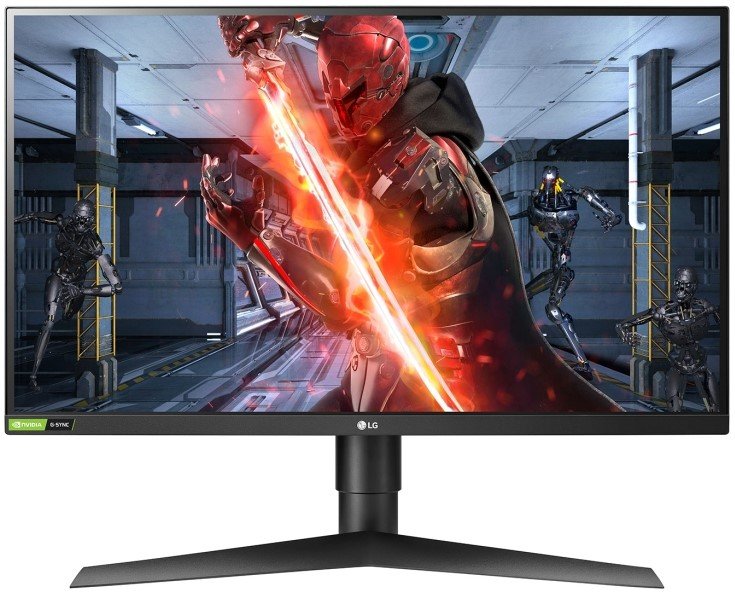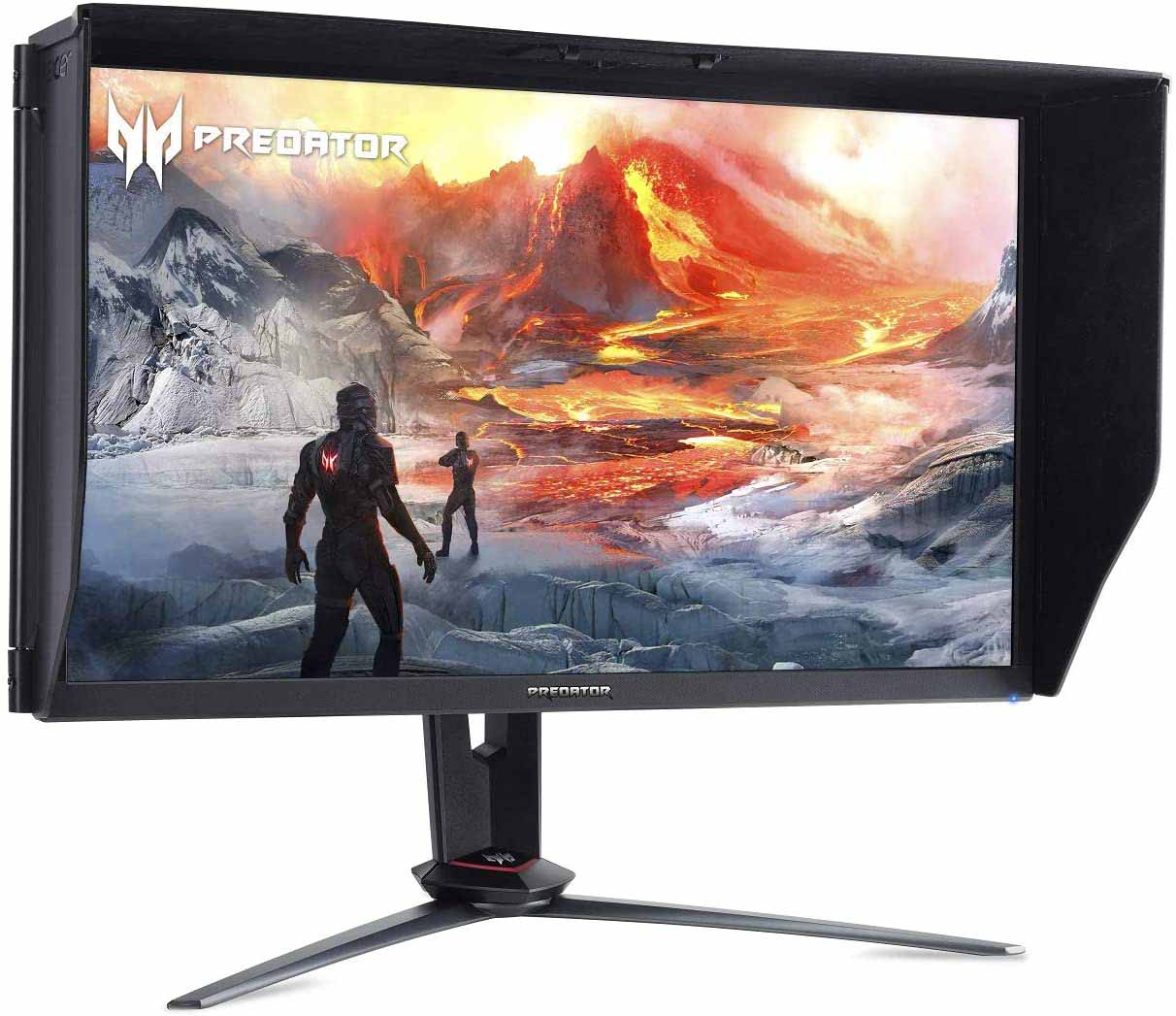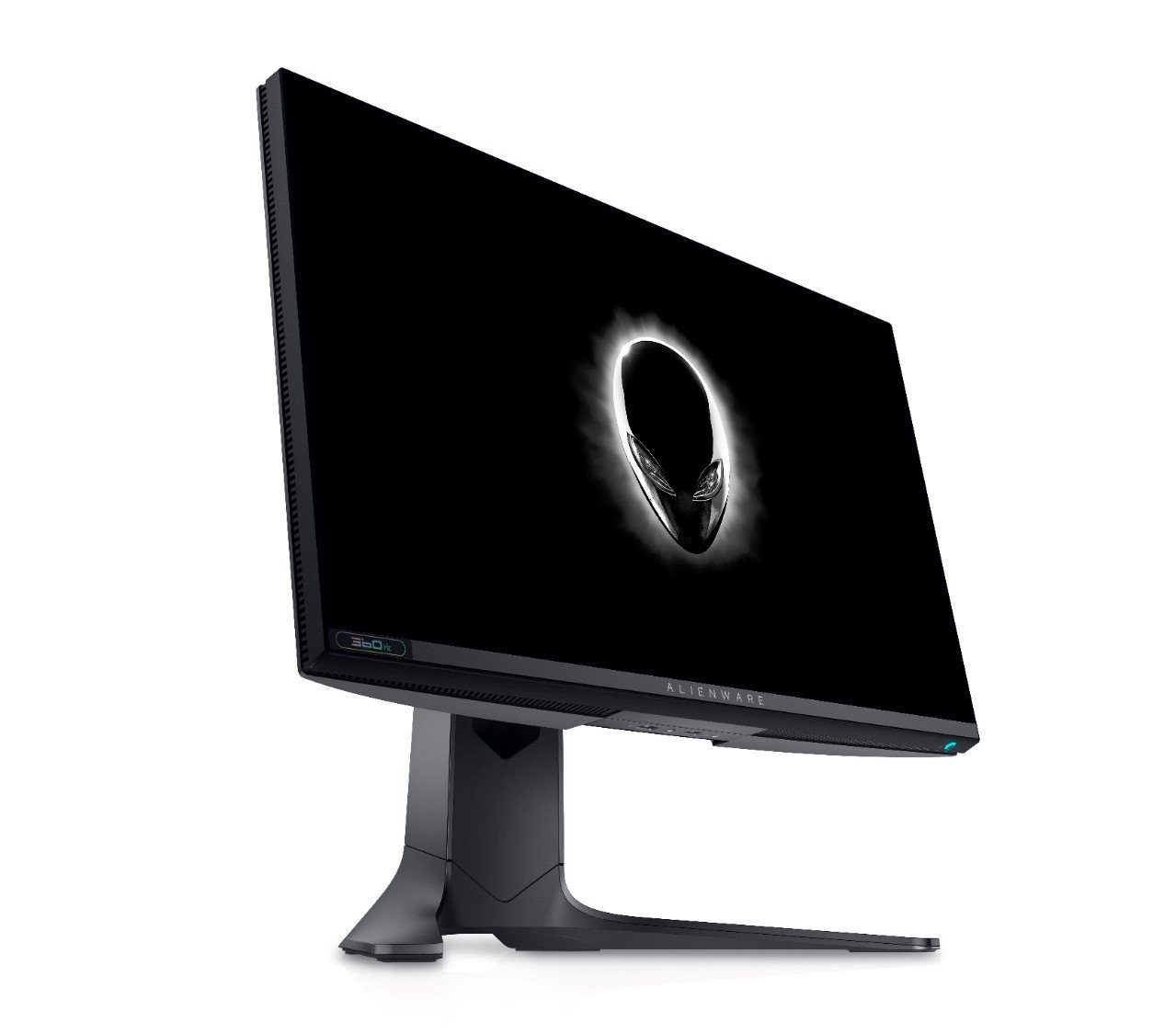Purchasing a solid monitor for gaming can really enhance your visual experience. When looking for a new monitor, there are various features specifically tailored for gaming. Taking full advantage of G-Sync by NVIDIA — should you own a supported graphics card — is a worthwhile investment. We'll be taking a look at some of the best computer monitors with the technology implemented that you can buy today.
Best for 1440p: ASUS ROG Swift PG279Q
The ASUS ROG Swift PG279Q is the company's 27-inch 1440p gaming display with a refresh rate of 165Hz for smoother gameplay. It's a premium monitor, sporting not only NVIDIA's G-Sync technology but also a response time of just 4ms, which is more than ideal for fast-paced gaming on an IPS panel.
Eye care technology deployed by ASUS ensures the TUV-certified monitor helps reduce eye fatigue by being flicker-free. This display even sports a VESA mount for brackets, but if you prefer to use the included stand, it can tilt, swivel, pivot and be vertically adjusted to achieve the most comfortable viewing position.
It's easy to configure the monitor too, thanks to the 5-way on-screen navigation joystick to quickly alter settings. Inputs include DisplayPort 1.2, HDMI 1.4, and USB 3.0 throughput.
Pros:
- Massive 27-inch G-Sync panel
- 1440p gaming
- IPS tech for gorgeous colors
- 165Hz refresh rate
- 4ms response time
Cons:
- Pricey
- No HDR
- Blacks can be a little weak
Best for 1440p
ASUS ROG Swift PG279Q
$1,100 at Amazon $1199 at Walmart
Best display for 1440p gaming
ASUS ROG Swift PG279Q is a brilliant IPS gaming monitor for NVIDIA GPUs. It has a stunning panel for deep and vibrant colors, a 165Hz refresh rate, 4ms response time, and a 1440p resolution.
Best Value 1440p: LG UltraGear 27GL850-B
The LG UltraGear 27GL850-B is one of our favorite gaming monitors and we even included it in our best PC gaming monitors collection. It's a 27-inch QHD monitor with all the bare essentials you need for a capable gaming monitor.
There's no fancy HDR, but the monitor has a stellar 144Hz refresh rate and a fantastically low 1ms response time. Paired with the thin bezels and superb color accuracy, these features mean your games will look more immersive. The benefits extend to gameplay as well, as a higher refresh rate and low response time mean that gameplay will look cleaner, crisper, and smoother.
The monitor comes with the ability to adjust the height, swivel, and tilt so that you can find a viewing angle that works for you. And yes, it even has G-Sync at this reasonable price.
Pros:
- Thin bezels
- 1440p gaming
- Good price
- 144Hz refresh rate
- 1ms response time
Cons:
- No HDR
Best Value 1440p
LG UltraGear 27GL850-B
Great value 1440p gaming
With a refresh rate of 144Hz, a response time of just 1ms, and a resolution of 1440p, you're going to have a good time with the LG UltraGear 27GL850-B. It has everything you need at a reasonable price.
Best for 4K: Acer Predator XB273K
If you want to take your gaming to the next level, 4K is where the big boys game, and the Acer Predator XB273K is a fine example. It's an IPS display with G-Sync support for butter-smooth PC gaming that'll look amazing on the 27-inch panel. As well as looking the part, this screen has plenty of features to go along with it.
The 4K resolution is joined by a 144Hz refresh rate, HDR support, and a 4ms response time. The 144Hz refresh rate at 4K is the highlight here since you were locked to 60Hz in the past when moving to 4K monitors. Being able to ramp up the frames with a capable NVIDIA GPU (you will require an RTX 30-series card) will result in a vastly improved experience.
If we were to complain about something, it would be HDR support. While it's there and certainly makes a difference in games and media, it's nowhere near close to what's offered by LG, Samsung, and other vendors in their expensive TVs. Still, for 4K PC gaming, this is about as good as you'll get.
Pros:
- 27-inch G-Sync display
- Stunning 4K IPS panel
- 144Hz refresh rate
- HDR support
- 4ms response time
Cons:
- HDR isn't the best
- Pricey
Best for 4K
Acer Predator XB273K
$1,249 at Amazon $700 at Walmart
Best display for 4K gaming
This 4K display from Acer is a monster. It has HDR, though it isn't the best implementation, a 144Hz refresh rate, 4ms response time, and a 4K resolution for impressive gaming.
Best Value 4K: Acer Nitro XV273K
NVIDIA's G-Sync is a technology that was always reserved for the more expensive monitors because it required dedicated hardware found in these displays that would work with its GPUs. That's no longer the case and now you can find plenty of more affordable AMD FreeSync monitors that are certified by NVIDIA to work with G-Sync-capable GeForce graphics cards.
The Acer Nitro ZV273K is one such monitor with a 4K resolution, 144Hz refresh rate, HDR support, and a 1ms response time. This makes for quite a compelling display for both AMD and NVIDIA GPU owners. What really makes this a great display, however, is the brightness. It can reach up to 500 nits, which is really bright and ideal for making on-screen content pop.
Weirdly, you cannot have G-Sync and HDR enabled simultaneously. This isn't a major issue since the HDR support isn't brilliant, but is worth bearing in mind if you planned on using both.
Pros:
- FreeSync with G-Sync support
- Affordable 4K display
- 144Hz refresh rate
- HDR support
- 1ms response time
Cons:
- HDR isn't great
- Can't have G-Sync and HDR
Best Value 4K
Acer Nitro XV273K
Great value 4K gaming
The Acer Nitro XV273K is an interesting gaming monitor since it's affordable, yet supports NVIDIA G-Sync. This is because NVIDIA certified it for NVIDIA GPUs, but it was designed with AMD FreeSync in mind. Still, you get a 144Hz refresh rate, 1ms response time, and an impressive 4K resolution.
Best for 1080p: Alienware AW2521H
Dell managed to pack some serious tech into the AW2521H. I'm talking about a gorgeous 25-inch IPS panel with a 1ms response time, which is pretty astounding for this type of display. The refresh rate is even more mind-blowing at 360Hz. That means you can display up to 360 frames per second, should you have a good enough graphics card.
But why would you want a 1080p display with a terribly high refresh rate? Competitive gaming. Esports players and those who take their game a little more seriously than others favor smooth, uninterrupted frame rates over visual fidelity. The AW2521H from Dell fits the bill with its Full HD resolution and amazing refresh rate.
The G-Sync support is the icing on the cake, allowing the display and graphics card to synchronize to avoid any screen tearing and stuttering. Overall, this is one of the best displays for competitive gaming.
Pros:
- G-Sync support
- Excellent for competitive play
- 360Hz refresh rate
- IPS panel
- 1ms response time
Cons:
- "Only" 1080p
- Pricey
Best for 1080p
Alienware AW2521H
Best for 1080p gaming
This is one of the better monitors you can buy for esports. The 360Hz refresh rate will blow your mind if you have a capable GPU to keep up with it, which is why the resolution is just 1080p (or Full HD). This screen is all about smooth gameplay.
Choosing the best G-Sync gaming monitor
Getting the most out of your G-Sync-capable PC requires a display that can take advantage of NVIDIA's excellent graphics cards. Our collection includes only the best G-Sync monitors for different resolutions, and we've complemented it with some helpful materials below that'll run you through what G-Sync is, which GPUs support it, and how you can go about enabling the technology.
What is G-Sync?
NVIDIA developed G-Sync to help reduce screen-tearing and stuttering. It works differently from AMD's FreeSync but achieves similar results. G-Sync synchronizes both the monitor and graphics card, thanks to an onboard module inside the display. The card and monitor will only run as fast as the slowest of the two can handle, depending on where the bottleneck happens to be.
If your GPU is unable to keep up with the monitor refresh rate, the display will slow down to match the frame output of your PC. The inverse will see the GPU slow to match the refresh rate limit configured on the monitor. Essentially, G-Sync makes sure that each and every frame produced by the GPU is displayed on the monitor.
While AMD's FreeSync generally doesn't increase the cost of the monitor, NVIDIA requires a chip to be installed inside the display itself. This increases the cost of production for monitor manufacturers, which in turn drives up the price for consumers. You will also need to use DisplayPort in order to enjoy stutter-free gaming with G-Sync, as HDMI is not supported.
Which NVIDIA GPUs support G-Sync?
As well as grabbing and setting up a monitor that supports the technology, you'll also need to ensure you have a graphics card that can handle G-Sync. Following are the NVIDIA graphics cards that support G-Sync. Have hardware that doesn't make the list? Have a look at our collection of the best graphics card options for an upgrade.
- GeForce RTX 3090
- GeForce RTX 3080
- GeForce RTX 3070
- GeForce RTX 3060 Ti
- GeForce RTX 3060
- GeForce RTX 2080 Ti
- GeForce RTX 2080
- GeForce RTX 2070 SUPER
- GeForce RTX 2070
- GeForce RTX 2060 SUPER
- GeForce RTX 2060
- GeForce GTX 1660 SUPER
- GeForce GTX 1660
- GeForce GTX 1080 Ti
- GeForce GTX 1080
- GeForce GTX 1070
- GeForce GTX 1060
- GeForce GTX Titan X
- GeForce GTX Titan Xp
- GeForce GTX 980 Ti
- GeForce GTX 980
- GeForce GTX 970
- GeForce GTX 965M
- GeForce GTX 960 (OEM)
- GeForce GTX 950
- GeForce GTX TITAN Z
- GeForce GTX TITAN Black
- GeForce GTX TITAN
- GeForce GTX 780 Ti
- GeForce GTX 780
- GeForce GTX 770
- GeForce GTX 760
- GeForce GTX 750 Ti
- GeForce GTX 750
- GeForce GTX 745
- GeForce GTX 690
- GeForce GTX 680
- GeForce GTX 670
- GeForce GTX 660 Ti
- GeForce GTX 660
- GeForce GTX 650 Ti BOOST
How to enable G-Sync on your monitor
How to enable NVIDIA G-Sync on your PC is a relatively straightforward process that involves nothing but the NVIDIA Control Panel on Windows 10. We've got a quick guide that will get you up and running in no time at all so you have more time to enjoy your favorite PC games.
Credits — The team that worked on this guide
![]()
Rich Edmonds is a staff reviewer at Windows Central, which means he tests out more software and hardware than he cares to remember. Joining Mobile Nations in 2010, you can usually find him inside a PC case tinkering around when not at a screen fighting with Grammarly to use British words. Hit him up on Twitter: @RichEdmonds.











0 comments:
Post a Comment